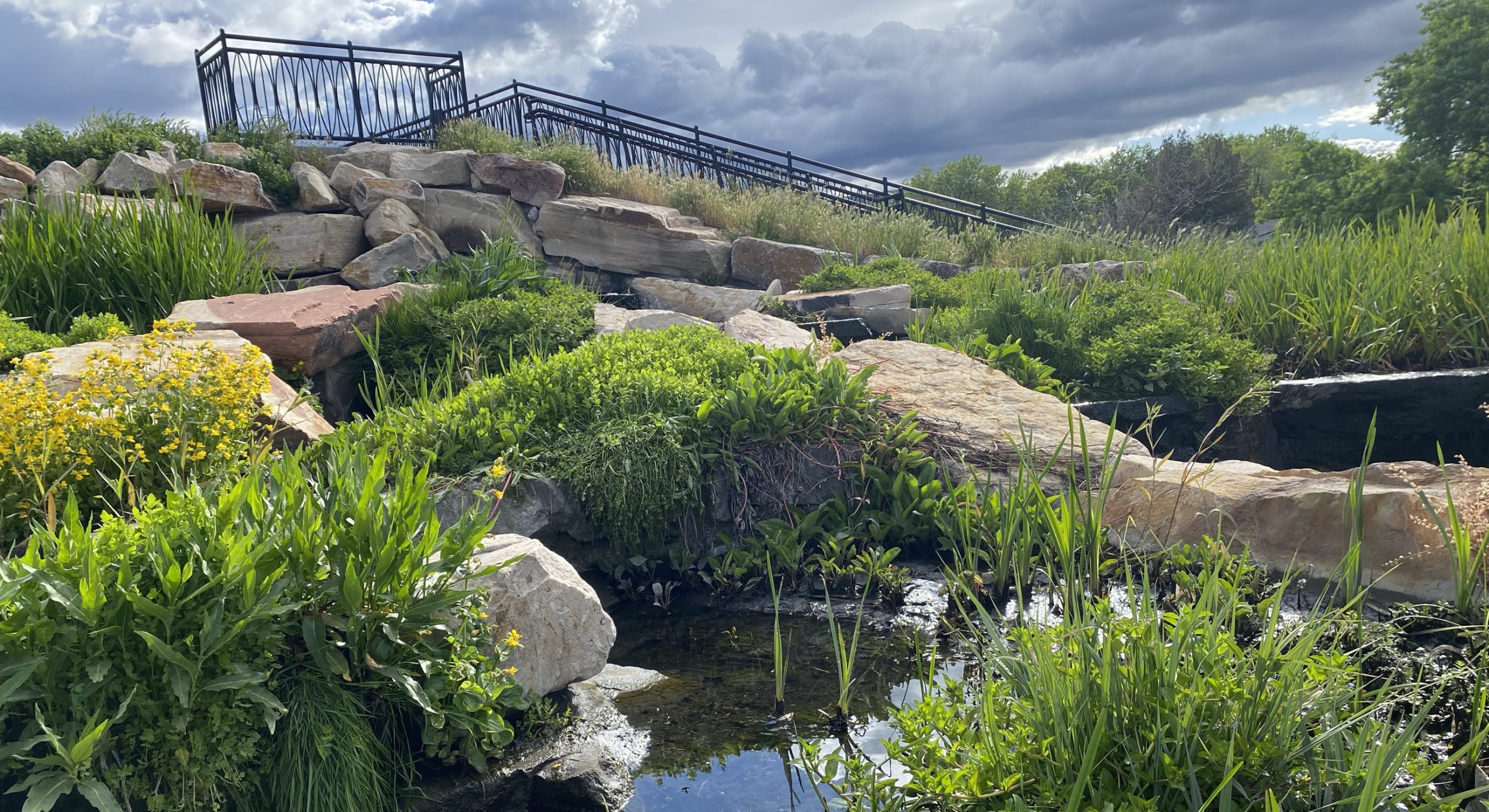
Native Wetland Plants Maintain a Healthy Balance of Algae in Our Parks and Natural Lands
Algae are a natural, necessary, and healthy part of our freshwater streams, lakes, and ponds. They are a source of food for macroinvertebrates and zooplankton, which means they support the entire aquatic food web.
An algal bloom, or a significant presence of algae, can occur when the water is warmer, still, or when an imbalance of nutrients enters the water due to increased human or pet activity. As foot traffic, dog traffic, and population growth occur in and around our fresh water, nutrient pollution and algal blooms are more common. We see these blooms occasionally in our parks and natural lands. They can affect the health of wildlife, people, and pets alike. However, many algal blooms are not harmful. So, how do we tell the difference?
In Utah, USU Water Quality Extension monitors bodies of water, and you can check online for harmful algae blooms (HABs) by visiting their website. Always check for signage alerting visitors of a bloom, and please respect any signage asking you not to enter the water. You can also look at the algae present for a few clues.
Algal blooms can appear as slimy overgrowths of algae (images 1 & 2 below). These green/brown, large filamentous blooms are not harmful; they are simply a sign of increased nutrients in the water.
Harmful algal blooms (HABs) can occur as spilled paint on the surface of the water (image 3 below) or not be visible at all. HABs are large growths of cyanobacteria that may or may not change the water color but cyanobacteria is not always visible to the naked eye. We ask that you not enter the water in many of our parks. This does not indicate the presence of an HAB, but is a preventative measure which reduces the potential for excessive, HAB-causing nutrients in the water.
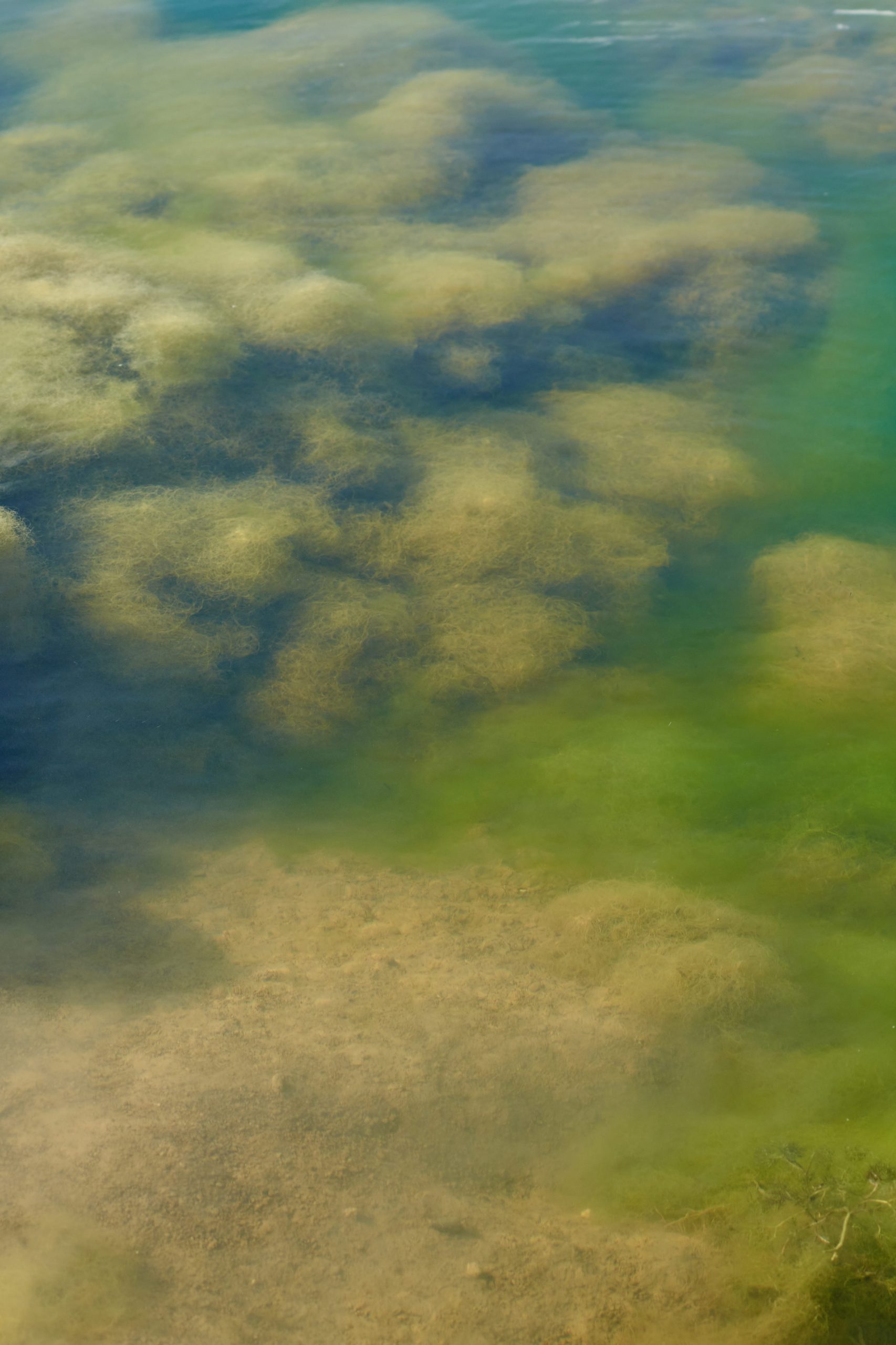
HEALTHY: Green large filamentous algae are a healthy source of food for macroinvertebrates and zooplankton.
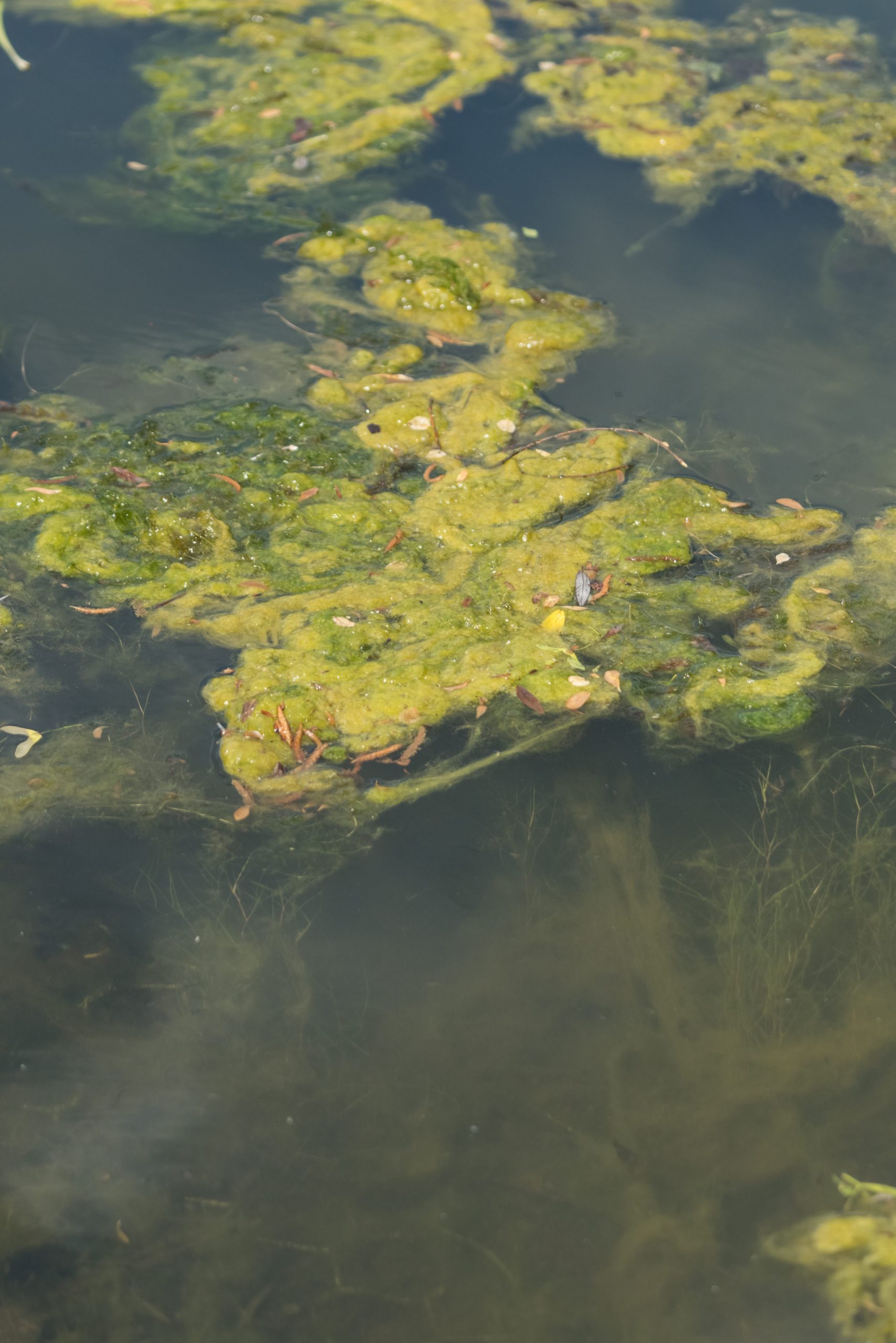
HEALTHY: Beneficial, large filamentous algae

HARMFUL: While harmful algae bloom (HAB) containing cyanobacteria can not always be seen, the visible ones look like spilled paint on the surface of a pond.
How Native Wetland Plants Help Maintain Balance
To improve the overall health and beauty of our waters and environment, the Salt Lake City Trails and Natural Lands team’s Native Plant Program restores native wetland plants in our Public Lands. We grow many of these plants in the greenhouse and then plant them in the water and around it’s edge. Not only are these plants beautiful, but native wetland plants compete directly with algae for light and nutrients, acting as natural filters for our water.
While aquatic plantings reduce the possibility of HABs and non-toxic blooms, they have many additional benefits. The plants create more beautiful spaces, provide habitat for species that thrive in aquatic environments, and lead to cleaner, healthier ecosystems.
We encourage you to visit our parks, trails, and natural lands to see our always improving aquatic environments, but please help us protect our water by observing it from the shoreline.

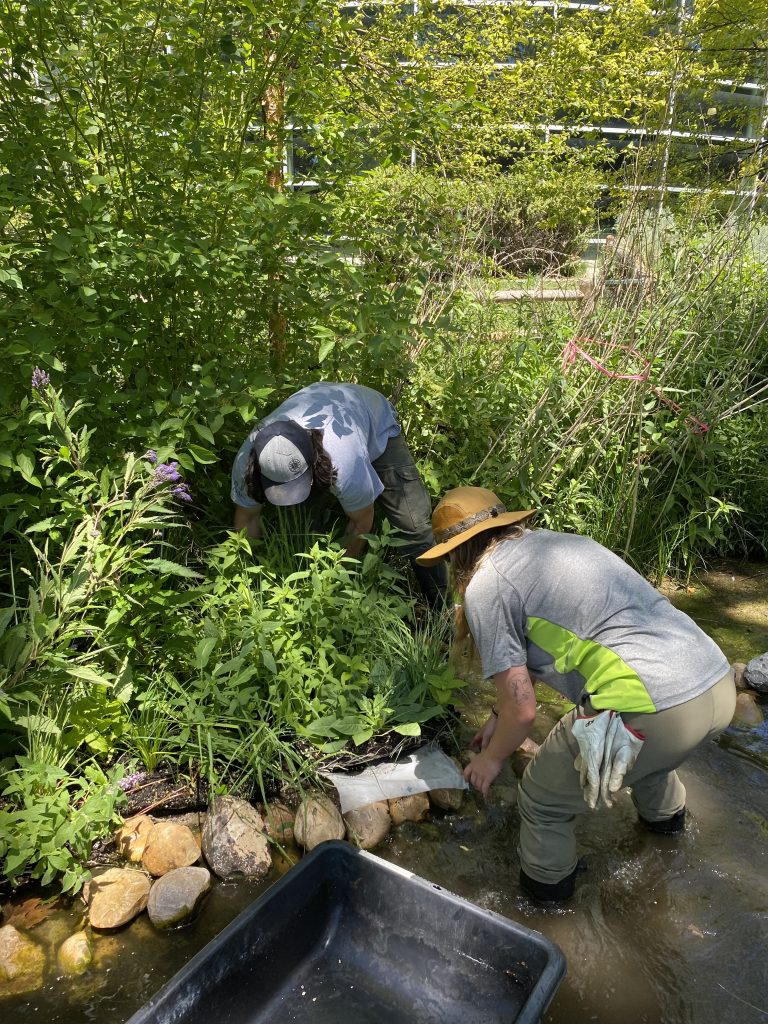
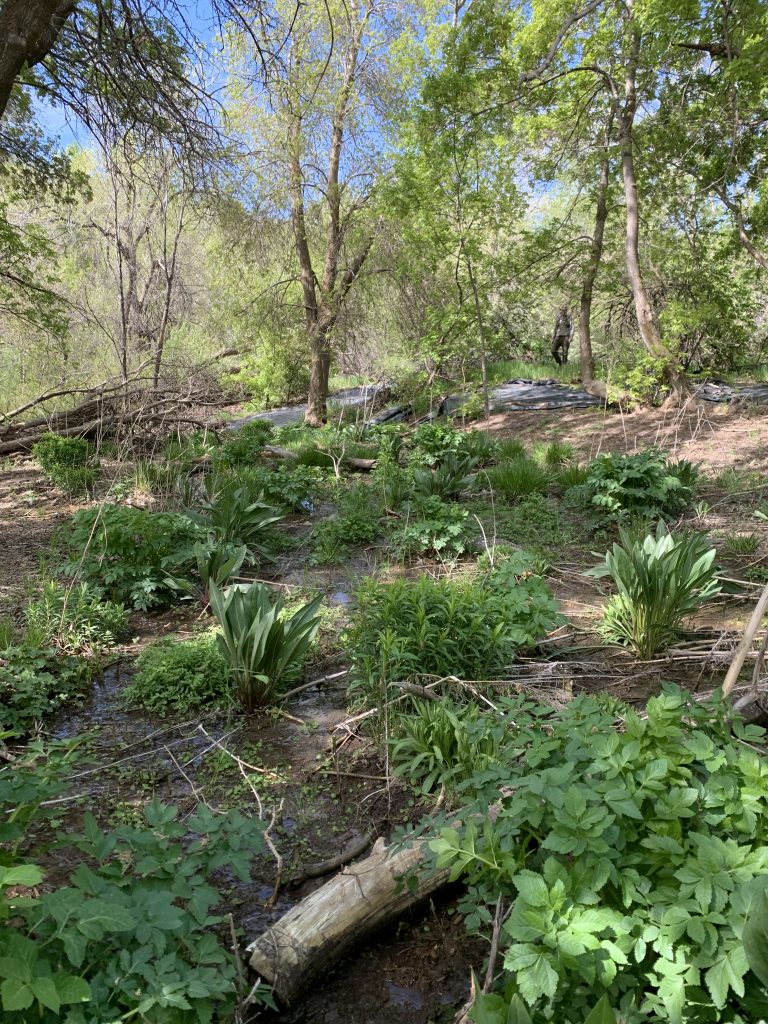
What can you do to help?
PROTECT OUR WATER FROM PET WASTE
Water originating from irrigation, rain or snowmelt, and flowing from anywhere in our city, eventually enters our waterways, carrying any waste and debris it picks up along with way with it. Picking up after our pets and properly disposing of waste in a bin will reduce the amount of waste that makes its way into our water!
FOLLOW SIGNAGE AND STAY OUT OF PROTECTED WATER
In some of our parks and natural lands, we post signage requesting that you and your pets stay out of the water. This protects both the health of our water and that of your pets. A contaminated water source can make you and your pets sick, too.